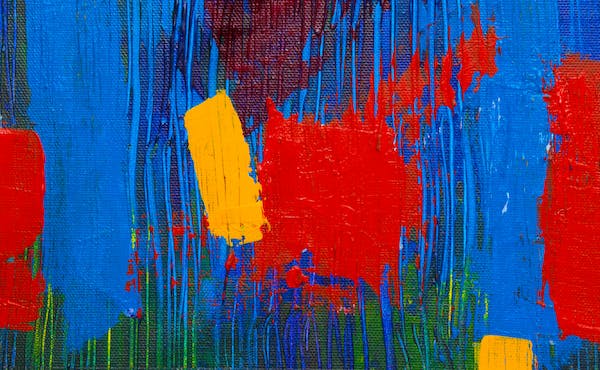Padel, a dynamic and engaging racket sport, has rapidly gained popularity around the world for its unique blend of tennis and squash elements. With its distinctive court design, social atmosphere, and accessible gameplay, Padel has captured the attention of sports enthusiasts of all ages and skill levels. Originating in Mexico and Spain, Padel has become a global sensation, attracting players, fans, and investors alike. This comprehensive overview delves into the key aspects of Padel, shedding light on its history, rules, equipment, and the reasons behind its meteoric rise.
Key Aspects of Padel:
1. Court and Equipment: Padel is typically played on a court that measures 20 meters in length and 10 meters in width. The court is enclosed by glass walls and metal mesh, creating a unique dynamic where players can use the walls to keep the ball in play. Padel rackets are solid, perforated, and without strings, while the ball resembles a tennis ball but is slightly smaller and less pressurized.
2. Scoring System: Padel employs a simplified scoring system similar to tennis. The game is typically played in doubles, where teams of two players face off against each other. The scoring follows a 0 to 40 system, with points like 15, 30, and deuce. Unlike tennis, Padel employs a “no-advantage” scoring system, meaning that if the score reaches deuce, the next point wins the game.
3. Serving Rules: The serve in Padel must be executed underhand, with the ball struck below waist level. It must be directed diagonally into the opponent’s service box, similar to squash. The ball must bounce in the service box before it can be returned by the receiving team. Padel’s unique feature is that the ball can also be played off the side walls, adding an extra layer of strategy to the game.
4. Wall Play and Strategy: The presence of walls in Padel opens up opportunities for creative shot-making. Skilled players utilize the walls to strategically position the ball in areas that challenge their opponents’ ability to return. The ability to play off the walls adds an exciting dynamic to rallies and requires players to maintain awareness of ball trajectory and court positioning.
5. Social and Inclusive: One of Padel’s distinct characteristics is its emphasis on social interaction. The enclosed court and shorter dimensions create a more intimate atmosphere, allowing players to engage in conversations during matches. Padel’s accessibility and shorter learning curve make it attractive to beginners, families, and players of varying ages and fitness levels.
6. Global Expansion: Padel’s origins can be traced back to Mexico and Spain, but the sport has rapidly expanded its reach. It has gained a significant foothold in European countries like Spain, Portugal, and Sweden, as well as in Latin American nations. Padel is increasingly becoming a global phenomenon, with courts and clubs springing up in various countries, contributing to the sport’s growth and exposure.
7. Tournaments and Professional Circuit: Padel has established a presence in the competitive sports arena through a burgeoning professional circuit. Major tournaments such as the Padel World Championship and the World Padel Tour attract top-ranked players and enthusiastic fans. The professional circuit showcases high-level play, contributing to Padel’s elevation as a serious sporting discipline.
8. Community and Lifestyle: Beyond its competitive aspect, Padel fosters a sense of community and camaraderie. Many players are drawn to Padel not only for the sport itself but also for the social interactions and friendships it cultivates. Padel clubs often offer a range of facilities, including social areas, restaurants, and amenities that contribute to a vibrant and inclusive lifestyle.
9. Fitness and Health Benefits: Padel is a physically demanding sport that provides a comprehensive cardiovascular workout. The combination of aerobic and anaerobic movements, along with the agility required to cover the court, contributes to improved endurance, coordination, and overall fitness. Padel’s engaging nature encourages players to stay active and enjoy the sport as part of a healthy lifestyle.
10. Accessible and Enjoyable: Padel’s relatively simple rules and shorter learning curve make it accessible to players of varying skill levels. Whether you’re a seasoned athlete or a recreational player, Padel offers an enjoyable and rewarding experience on the court. The blend of skill, strategy, and social interaction creates a unique sporting experience that continues to captivate players around the world.
Padel’s journey from its origins in Mexico and Spain to its current status as a global sensation showcases its ability to transcend borders, cultures, and demographics. The sport’s unique blend of strategy, skill, and social interaction has resonated with players of all ages and backgrounds, contributing to its widespread popularity. As Padel continues to grow and evolve, it solidifies its position as a dynamic and inclusive racket sport that’s here to stay.
Padel’s meteoric rise in popularity is a testament to its inherent qualities that resonate with modern sports enthusiasts. The sport’s blend of tennis and squash elements, coupled with its emphasis on social interaction, accessibility, and dynamic gameplay, has created a winning formula that appeals to a diverse audience. As Padel courts continue to spring up around the world, the sport’s global footprint expands, fostering a sense of community and camaraderie among players from different cultures and backgrounds.
The social aspect of Padel sets it apart from other racket sports. The enclosed court design encourages interaction between players during matches, making it a highly sociable activity. This feature appeals to both competitive players seeking intense rallies and recreational players looking for an enjoyable way to stay active. Padel clubs often offer amenities that cater to this social aspect, such as lounges, cafés, and areas for spectators to watch matches, creating a holistic experience that extends beyond the court.
Furthermore, Padel’s inclusivity has contributed to its widespread adoption. The sport’s rules are relatively simple to grasp, and the shorter learning curve compared to sports like tennis makes it accessible to newcomers. Families, children, seniors, and individuals of varying fitness levels can all enjoy Padel, making it an ideal activity for communities and groups with diverse interests. This accessibility has played a significant role in Padel’s rapid growth and integration into the sports landscape.
Padel’s expansion into the professional circuit has further cemented its position as a serious sport. Major tournaments like the World Padel Tour attract top-tier athletes who compete at a high level, showcasing impressive skills and strategies. The professional circuit not only enhances the sport’s competitive aspect but also provides role models and inspiration for aspiring players. As Padel gains recognition on the global stage, it draws attention from sponsors, investors, and media outlets, contributing to its sustained growth.
The health and fitness benefits of Padel are also noteworthy. The sport’s combination of cardiovascular exercise, strength training, and agility work contributes to improved overall fitness. Players engage in rapid movements, quick reactions, and lateral shifts, leading to enhanced coordination, endurance, and muscular strength. Padel’s engaging gameplay encourages players to stay active and enjoy a full-body workout, aligning with the increasing emphasis on health-conscious lifestyles.
Padel’s journey from its origins in Mexico and Spain to its present status as a global sensation underscores its unique blend of athleticism, strategy, and social interaction. The sport’s accessible nature, inclusive appeal, dynamic gameplay, and integration into the professional circuit have contributed to its rapid growth and widespread adoption. As Padel continues to transcend borders, cultures, and demographics, it solidifies its place in the sporting world as a dynamic, engaging, and socially interactive racket sport. Whether enjoyed at a competitive level or as a recreational pastime, Padel’s enduring popularity speaks to its ability to capture the hearts of players around the globe.
Padel stands as a shining example of how a sport can blend athleticism, strategy, and social interaction to create a unique and engaging experience. Its fusion of tennis and squash elements, coupled with its emphasis on accessibility, inclusivity, and dynamic gameplay, has led to its rapid rise in popularity across the globe. Padel’s journey from its origins in Mexico and Spain to its current status as a global sensation underscores its ability to transcend cultural boundaries and resonate with players of all ages and backgrounds.
The sport’s distinctive court design, where players can use walls to keep the ball in play, adds an exciting layer of strategy and creativity to each match. Padel’s social nature, fostered by the enclosed court and its inviting atmosphere, sets it apart from traditional racket sports. Players enjoy not only the thrill of competition but also the camaraderie and friendships forged on and off the court. Padel’s inclusive and accessible nature further contributes to its appeal, inviting individuals of varying skill levels and ages to participate and enjoy the game.
In conclusion,The sport’s presence in the professional circuit solidifies its place in the competitive sports landscape. Top-ranked players showcase their skills in major tournaments, drawing attention from fans, sponsors, and media outlets. Padel’s expansion into various countries and communities speaks to its universal appeal and its ability to create a global community of players who share a passion for the game.
Beyond its entertainment value, Padel offers tangible health and fitness benefits. The combination of cardiovascular exercise, strength training, and agility work makes it a comprehensive workout that contributes to improved overall fitness. Padel encourages players to lead active lifestyles and embrace physical activity as part of their daily routines.
In a world where sports continue to evolve, Padel’s enduring popularity serves as a reminder of the power of innovation, community, and enjoyable gameplay. Whether played competitively or casually, Padel’s influence on players and enthusiasts is undeniable. As the sport continues to grow and capture the imagination of new generations, it embodies the spirit of healthy competition, social connection, and the joy of playing a sport that celebrates athleticism, strategy, and shared experiences. Padel’s journey is a testament to the enduring appeal of sports that bring people together, fostering a sense of unity and enjoyment that extends well beyond the boundaries of the court.


















